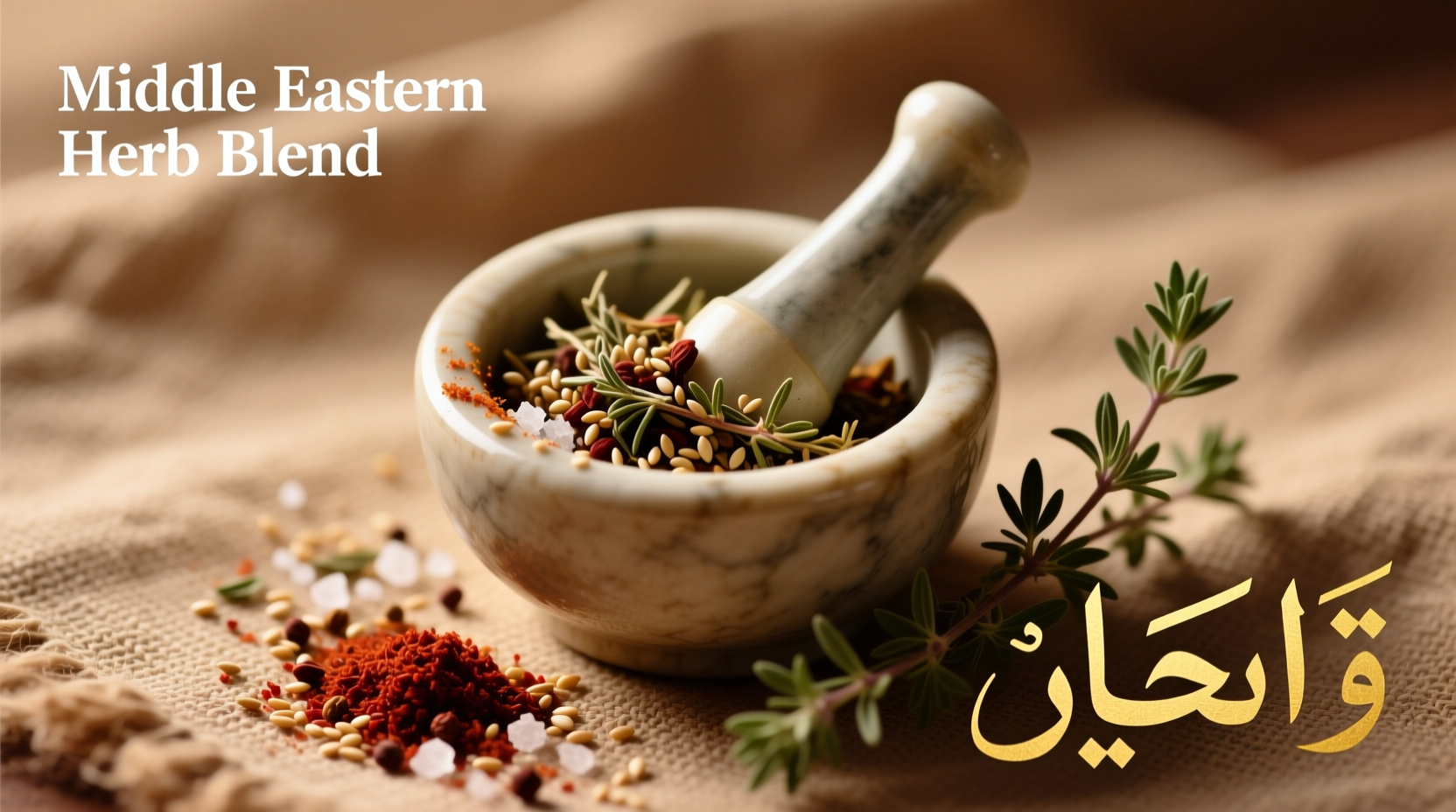Za'atar is a traditional Middle Eastern spice blend typically composed of dried thyme, oregano, marjoram, sumac, toasted sesame seeds, and salt. This aromatic mixture has been used for centuries across Levantine cuisine, offering a distinctive tangy, herbal, and nutty flavor profile that enhances everything from flatbreads to roasted vegetables.
Unlock the secrets of one of the Mediterranean's most beloved seasonings with this comprehensive guide to za'atar. Whether you're a home cook looking to expand your spice repertoire or a culinary enthusiast curious about Middle Eastern flavors, you'll discover exactly what makes za'atar special, how to use it authentically, and why this ancient blend continues to captivate palates worldwide.
The Essential Za'atar Profile
More than just a spice, za'atar represents a culinary tradition spanning millennia. This versatile blend serves as both a seasoning and condiment throughout Lebanon, Syria, Jordan, Palestine, and Israel. Unlike single-ingredient spices, za'atar's magic lies in its harmonious combination of elements that create a complex flavor greater than the sum of its parts.
According to research published in the Journal of Ethnic Foods, za'atar consumption dates back to ancient Egyptian times, with references appearing in 15th century Arabic cookbooks. The word "za'atar" itself comes from the Arabic name for wild thyme, though modern blends incorporate multiple herbs for depth.
What's Really in Authentic Za'atar?
While recipes vary by region and family tradition, authentic za'atar maintains a consistent foundation. The core components work together to create its signature taste:
| Primary Ingredient | Percentage in Traditional Blend | Flavor Contribution |
|---|---|---|
| Dried thyme | 30-40% | Earthy, slightly minty base note |
| Sumac | 25-35% | Tangy, lemony brightness |
| Roasted sesame seeds | 15-25% | Nutty richness and texture |
| Additional herbs (oregano, marjoram) | 10-20% | Complex herbal notes |
| Salt | 5-10% | Flavor enhancer |
This composition reflects findings from culinary anthropologists studying traditional Middle Eastern spice markets. The precise ratios often remain family secrets passed through generations, with regional variations adapting to local herb availability.
How Za'atar Evolved Through History
Za'atar's journey reveals fascinating cultural exchanges across civilizations:
- Ancient Origins: Wild thyme varieties were used medicinally in ancient Egypt and referenced in biblical texts as "ezov"
- Hellenistic Period: Greek settlers incorporated local herbs into their culinary practices around 300 BCE
- Islamic Golden Age: 10th century Arabic cookbooks documented early za'atar recipes with sesame and sumac
- Ottoman Influence: Regional variations developed across the empire's territories from 1500s onward
- Modern Era: Za'atar gained global popularity through Middle Eastern diaspora communities since the 1970s
The University of California's Center for Middle Eastern Studies notes that za'atar's evolution demonstrates how food traditions adapt while maintaining cultural identity through political changes and migration patterns.
Practical Uses in Your Kitchen
Understanding za'atar's flavor profile helps you incorporate it effectively. Unlike many spice blends, za'atar shines when used both during cooking and as a finishing touch:
Best Applications for Za'atar
- Flatbread enhancement: Mix with olive oil for dipping or sprinkle on man'oushe (Middle Eastern pizza)
- Veggie boost: Toss roasted vegetables (especially eggplant, zucchini, or potatoes) with za'atar before serving
- Protein partner: Rub onto chicken or fish before grilling for Mediterranean flair
- Breakfast upgrade: Sprinkle over avocado toast or scrambled eggs
- Dressing base: Whisk with olive oil and lemon for vibrant salad dressings
Professional chefs at New York's Zahav restaurant emphasize that za'atar works best when paired with ingredients that provide contrast—its herbal notes complement rich foods while its acidity cuts through fatty dishes. Avoid high-heat cooking that diminishes its delicate flavors; add toward the end of preparation for maximum impact.
Health Benefits Backed by Research
Beyond flavor, za'atar offers notable nutritional advantages. A 2020 study in the Nutrition Journal analyzed its components:
- Thyme contains thymol, demonstrating antimicrobial properties in laboratory studies
- Sumac provides significant vitamin C and antioxidants
- Sesame seeds contribute healthy fats and calcium
- Traditional preparation methods preserve maximum nutrient retention
While not a miracle cure, incorporating za'atar into a balanced diet aligns with Mediterranean eating patterns associated with numerous health benefits. The American Heart Association recognizes traditional Middle Eastern diets featuring spices like za'atar as heart-healthy options.
Finding Authentic Za'atar
With za'atar's growing popularity, quality varies significantly. Follow these guidelines to select the best product:
- Check ingredient transparency: Authentic blends list specific herbs, not just "spice blend"
- Observe color: Should show visible green herbs and deep red sumac (not uniformly brown)
- Smell test: Fresh za'atar has vibrant herbal aroma, not dusty or stale scent
- Avoid additives: Traditional za'atar contains no preservatives or anti-caking agents
For optimal freshness, purchase from specialty spice shops or Middle Eastern markets where turnover is high. Store in an airtight container away from light and heat—properly stored za'atar maintains peak flavor for 6-8 months.
Create Your Own Authentic Za'atar
Commercial blends often compromise quality, but making your own ensures freshness and customization. This authentic recipe follows traditional Lebanese proportions:
Homemade Za'atar Recipe
- 3 tablespoons dried thyme
- 2 tablespoons sumac
- 1½ tablespoons toasted sesame seeds
- 1 tablespoon dried oregano
- 1 tablespoon dried marjoram
- 1½ teaspoons sea salt
Preparation: Gently toast sesame seeds in dry skillet until golden. Combine all ingredients in glass jar, shake well. Let rest 24 hours before use to allow flavors to meld. Store in cool, dark place.
Culinary anthropologist Claudia Roden notes in The Book of Jewish Food that regional variations exist: Palestinian blends often feature more sumac for tartness, while Syrian versions emphasize oregano. Adjust proportions to match your preferred flavor profile.
Common Questions About Za'atar
As you explore this versatile spice, these answers address frequent concerns:











 浙公网安备
33010002000092号
浙公网安备
33010002000092号 浙B2-20120091-4
浙B2-20120091-4